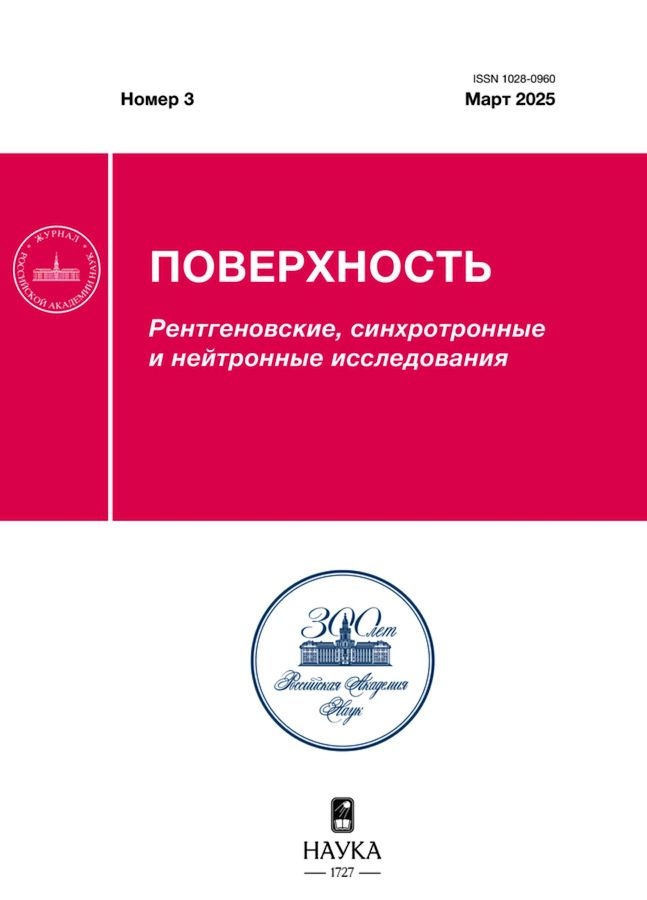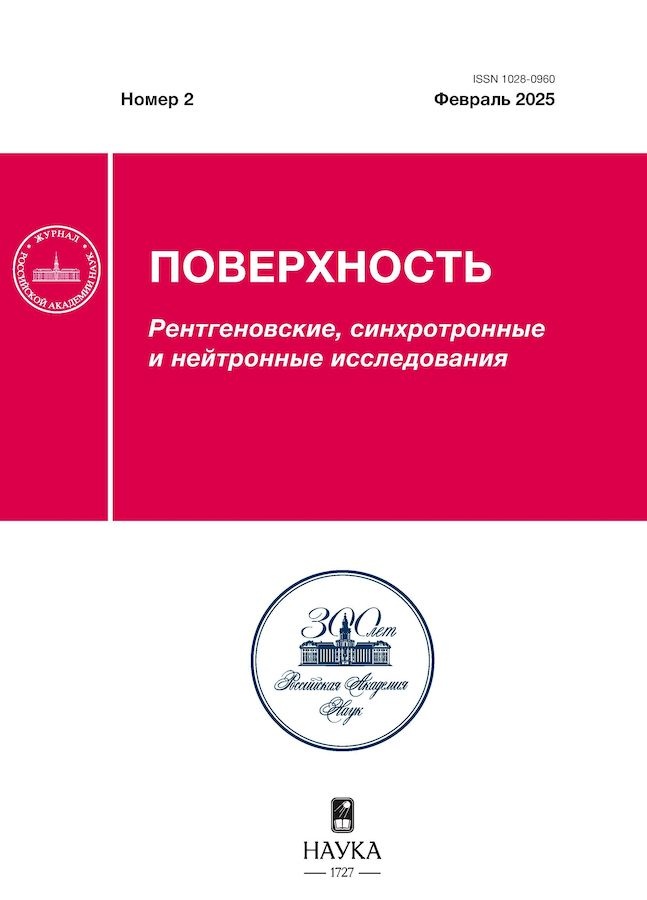Механизмы удаления метильных групп с поверхности low-k диэлектриков плазмой различного состава
- Авторы: Сычева А.А.1, Соловых А.А.1, Воронина Е.Н.1
-
Учреждения:
- Московский государственный университет им. М.В. Ломоносова
- Выпуск: № 2 (2025)
- Страницы: 32-45
- Раздел: Статьи
- URL: https://permmedjournal.ru/1028-0960/article/view/686771
- DOI: https://doi.org/10.31857/S1028096025020054
- EDN: https://elibrary.ru/EHGQNG
- ID: 686771
Цитировать
Полный текст
Аннотация
Диэлектрики с ультранизкой диэлектрической проницаемостью (так называемые low-k материалы) используют в качестве межслойных изоляторов медных проводников в сверхбольших интегральных схемах. Диффузия атомов Cu может приводить к деградации их свойств, и наиболее эффективным способом решения этой проблемы является создание на их поверхности ультратонких барьерных металлических слоев. Однако этот процесс затруднен сложным рельефом поверхности low-k пленок и наличием на ней гидрофобных CH3-групп, препятствующих осаждению металла. Поэтому перед нанесением слоев необходимо провести предварительную функционализацию поверхности, основной целью которой является удаление метильных групп. В настоящей работе выполнено динамическое моделирование методом теории функционала плотности воздействия радикалов и ионов плазмы различного состава (инертных газов, молекулярного азота и кислорода) на поверхность low-k диэлектрика с целью исследования механизмов удаления указанными частицами метильных групп. Полученные результаты продемонстрировали возможность осуществления этого процесса при достаточно низкой (10–15 эВ) энергии воздействующих частиц. В работе представлен подробный анализ рассчитанных траекторий частиц, выполнено сравнение взаимодействия с CH3-группами атомов инертных газов Ne и He и более химически активных атомов N и O, описаны особенности удаления групп под действием молекул и молекулярных ионов.
Полный текст
Об авторах
А. А. Сычева
Московский государственный университет им. М.В. Ломоносова
Email: solovykh.aa19@physics.msu.ru
Россия, Москва
А. А. Соловых
Московский государственный университет им. М.В. Ломоносова
Автор, ответственный за переписку.
Email: solovykh.aa19@physics.msu.ru
Россия, Москва
Е. Н. Воронина
Московский государственный университет им. М.В. Ломоносова
Email: solovykh.aa19@physics.msu.ru
Россия, Москва
Список литературы
- Baklanov M.R., Ho P.S., Zschech E. Advanced Interconnects for ULSI Technology. Wiley & Sons, 2012. 596 p.
- Jenkins M., Austin D.Z., Conley J.F., Fan J., de Groot C.H., Jiang L., Fan Ye, Ali R., Ghosh G., Orlowski M. // ECS J. Solid State Sci. Technol. 2019. V. 8. P. 159. https://www.doi.org/10.1149/2.0161910jss
- Volksen W., Miller R.D., Dubois G. // Chem. Rev. 2010. V. 110. P. 56. https://www.doi.org/10.1021/cr9002819
- Baklanov M.R., de Marneffe J.-F., Shamiryan D., Urbanowicz A.M., Shi H., Rakhimova T.V., Huang H., Ho P.S. // J. Appl. Phys. 2013. V. 113. P. 041101. https://www.doi.org/10.1063/1.4765297
- Rakhimova T.V., Lopaev D.V., Mankelevich Yu.A., Kurchikov K.A., Zyryanov S.M., Palov A.P., Proshina O.V., Maslakov K.I., Baklanov M.R. // J. Phys. D. 2015. V. 48. P. 175204. https://www.doi.org/10.1088/0022-3727/48/17/175204
- Braginsky O.V., Kovalev A.S., Lopaev D.V., Malykhin E.M., Mankelevich Yu.A., Rakhimova T.V., Rakhimov A.T., Vasilieva A.N., Zyryanov S.M., Baklanov M.R. // J. Appl. Phys. 2010. V. 108. P. 073303. https://www.doi.org/10.1063/1.3486084
- Yamamoto H., Takeda K., Ishikawa K., Ito M., Sekine M., Hori M., Kaminatsui T., Hayashi H., Sakai I., Ohiwa T. // J. Appl. Phys. 2011. V. 109. P. 084112. https://www.doi.org/10.1063/1.3562161
- Matsunaga N., Okumura H., Jinnai B., Samukawa S. // Jpn. J. Appl. Phys. 2010. V. 49. https://www.doi.org/10.1143/JJAP.49.04DB06
- Kunnen E., Baklanov M.R., Franquet A., Shamiryan D., Rakhimova T.V., Urbanowicz A.M., Struyf H., Boullart W. // J. Vac. Sci. Technol. B. 2010. V. 28. № 3. P. 450. https://www.doi.org/10.1116/1.3372838
- Sycheva A.A., Voronina E.N., Rakhimova T.V., Rakhimov A.T. // Appl. Surf. Sci. 2019. V. 475. P. 1021. https://www.doi.org/10.1016/j.apsusc.2019.01.078
- Xu H., Hu Zh.-J., Qu X.-P., Wan H., Yan Sh.-S., Li M., Chen Sh.-M., Zhao Y.-H., Zhang J., Baklanov M.R. // Appl. Surf. Sci. 2019. V. 498. P. 143887. https://www.doi.org/10.1016/j.apsusc.2019.143887
- Lionti K., Volksen W., Magbitang T., Darnon M., Dubois G. // ECS J. Solid State Sci. Technol. 2014. V. 4. P. 3071. https://www.doi.org/10.1149/2.0081501jss
- Walton S.G., Hernández S.C., Boris D.R., Petrova Tz.B., Petrov G.M. // J. Phys. D: Appl. Phys. 2017. V. 50. P. 354001. https://www.doi.org/10.1088/1361-6463/aa7d12
- Palov A.P., Proshina O.V., Rakhimova T.V., Rakhimov A.T., Voronina E.N. // Plasma Process. Polym. 2021. V. 18. P. 2100007. https://www.doi.org/10.1002/ppap.202100007
- Voronina E.N., Sycheva A.A., Solovykh A.A., Proshina O.V., Rakhimova T.V., Palov A.P., Rakhimov A.T. // J. Vac. Sci. Technol. B. 2022. V. 40. P. 062203. https://www.doi.org/10.1116/6.0002006
- Jensen F. Introduction to Computational Chemistry. Wiley & Sons, 2007. 620. p.
- Кон В., Попл Дж.А. // Усп. физ. наук. 2002. Т. 172. С. 335. https://www.doi.org/10.3367/UFNr.0172.200203d.0335
- Rakhimova T.V., Braginsky O.V., Ivanov V.V., Kovalev A.S., Lopaev D.V., Mankelevich Yu.A. // IEEE Trans. Plasma Sci. 2007. V. 35. P. 1229. https://www.doi.org/10.1109/TPS.2007.905201
- Kovalev A.S., Kurchikov K.A., Proshina O.V., Rakhimova T.V., Vasilieva A.N., Voloshin D.G. // Phys. Plasmas. 2019. V. 26. P. 123501. https://www.doi.org/10.1063/1.5123989
- Kresse G., Joubert D. // Phys. Rev. B. 1999. V. 59. P. 1758. https://www.doi.org/10.1103/PhysRevB.59.1758
- Perdew J.P., Ruzsinszky A., Tao J. // J. Chem. Phys. 2005. V. 123. P. 062201. https://www.doi.org/10.1063/1.1904565
- Kresse G., Furthmüller J. // Phys. Rev. B. 1996. V. 54. P. 11169. https://www.doi.org/10.1103/PhysRevB.54.11169
- Blöchl P.E. // Phys. Rev. B. 1994. V. 50. P. 17953. https://www.doi.org/10.1103/PhysRevB.50.17953
- Chaudhari M., Du J. // J. Vac. Sci. Technol. A. 2011. V. 29. P. 031303. https://www.doi.org/10.1116/1.3568963
- Rimsza J.M., Kelber J.A., Du J. // J. Phys. D: Appl. Phys. 2014. V. 47. P. 335204. https://www.doi.org/10.1088/0022-3727/47/33/ 335204
- Kazi H., Rimsza J., Du J. // J. Vac. Sci. Technol. A. 2014. V. 32. P. 051301. https://www.doi.org/10.1116/1.4890119
- Соловых А.А., Сычева А.А., Воронина Е.Н. // Письма в ЖТФ. 2022. Т. 48. С. 19. https://www.doi.org/10.21883/PJTF.2022.07.52286. 19085
- Voevodin V.V., Antonov A.S., Nikitenko D.A., Shvets P.A., Sobolev S.I., Sidorov I.Yu., Stefanov K.S., Voevodin V.V., Zhumatiy S.A. // Supercomput. Front. Innovations. 2019. V. 6. P. 4. https://www.doi.org/10.14529/jsfi190201
- Humphrey W., Dalke A., Schulten K. // J. Mol. Graphics. 1996. V. 14. P. 33. https://www.doi.org/10.1016/0263-7855(96)00018-5
- Darwent B. // Nat. Stand. Ref. Data Ser. NSRDS-NBS 31. Nat. Bur. Stand. 1970. P. 52. https://www.doi.org/10.6028/NBS.NSRDS.31
- Соловых А.А., Сычева А.А., Воронина Е.Н. // Поверхность. Рентген., синхротр. и нейтрон. исслед. 2023. № 2. С. 63. https://www.doi.org/10.1134/S1027451023010391
- Ландау Л.Д., Лифшиц Е.М. Теоретическая физика: Т. 1. Механика. М.: Наука. 1988, 224. с.
- Balucani N. // Chem. Soc. Rev. 2012. V. 41. Iss. 16. P. 5473. https://www.doi.org/10.1039/c2cs35113g
- Voronina E.N., Mankelevich Yu.A., Rakhimova T.V., Lopaev D.V. // J. Vacuum Sci. Technol. A. 2019. V. 37. Iss. 6. P. 061304. https://www.doi.org/10.1116/1.5122655
- Balucani N., Bergeat A., Cartechini L., Volpi G.G., Casavecchia P., Skouteris D., Rosi M. // J. Phys. Chem. A. 2009. V. 113. Iss. 42. P. 11138. https://www.doi.org/10.1021/jp904302g
- Lopaev D.V., Zyryanov S.M., Zotovich A.I., Rakhimova T.V., Mankelevich Yu.A., Voronina E.N. // J. Physics D. Appl. Phys. 2020. V. 53. P. 175203. https://www.doi.org/10.1088/1361-6463/ab6e99
- Tait K.S., Kolb C.E., Baum H.R. // J. Chem. Phys. 1973. V. 59. Iss. 6. P. 3128. https://www.doi.org/10.1063/1.1680454
- Герцберг Г. Спектры и строение двухатомных молекул. Москва: Изд-во иностр. лит. 1949. 404. с.
- Sadeghi N., Foissac C., Supiot P. // J. Phys. D Appl. Phys. 2001. V. 34. P. 1779. https://www.doi.org/10.1088/0022-3727/34/12/304
Дополнительные файлы



















